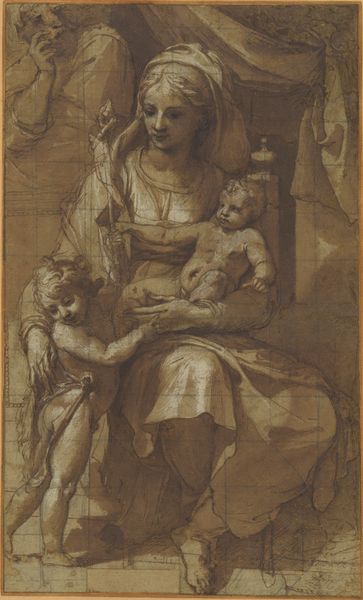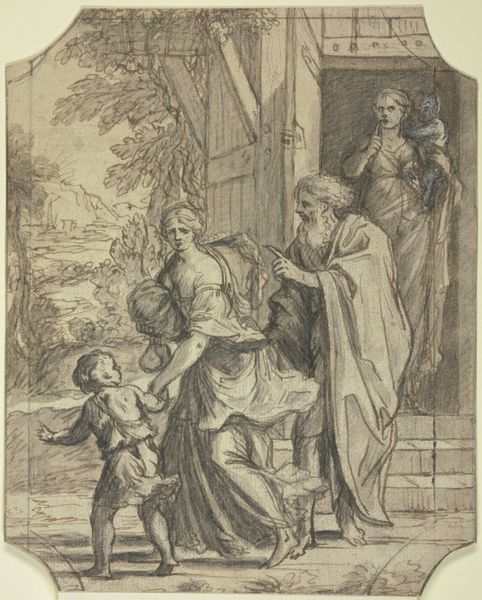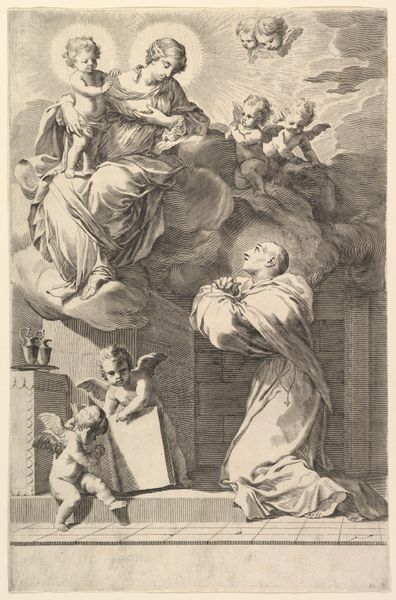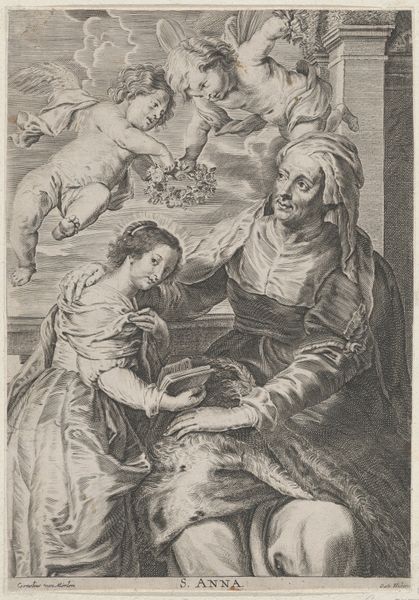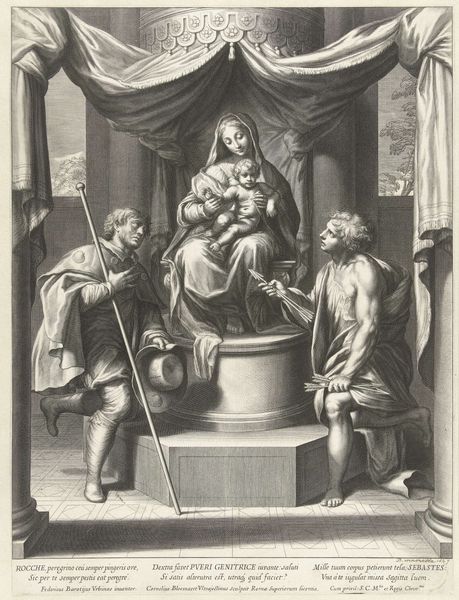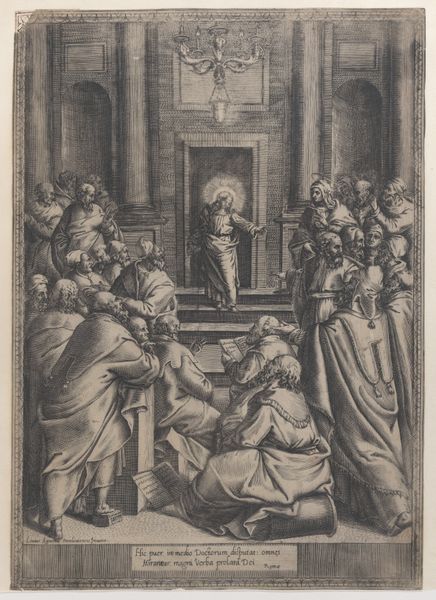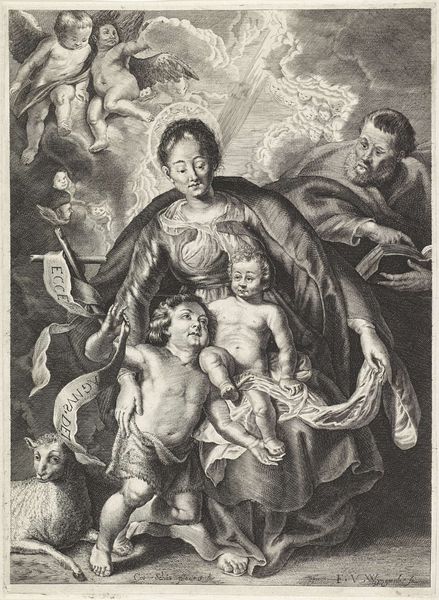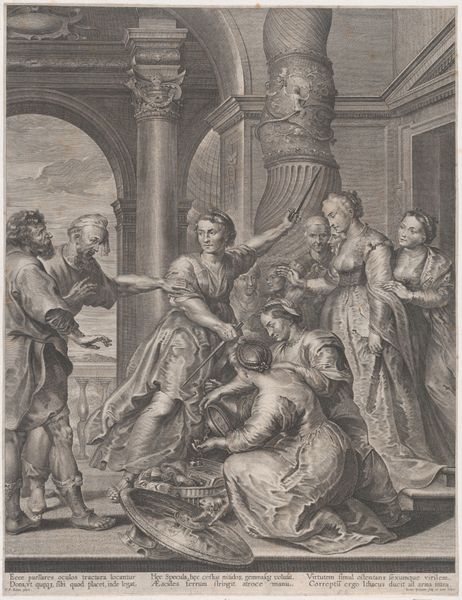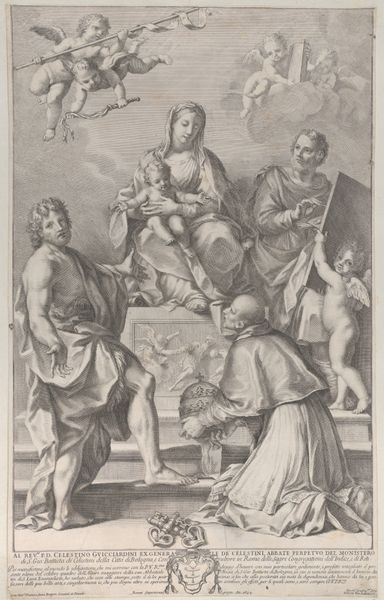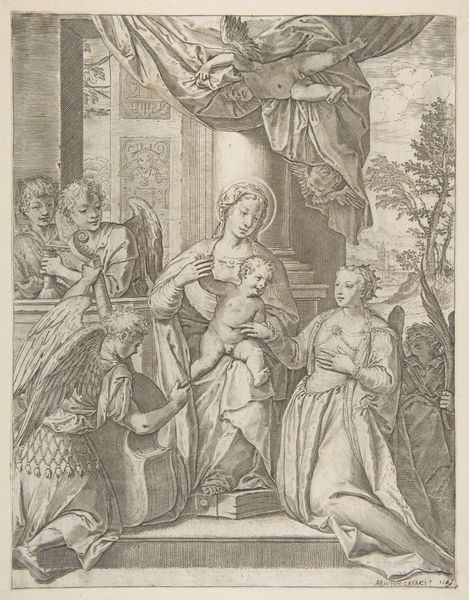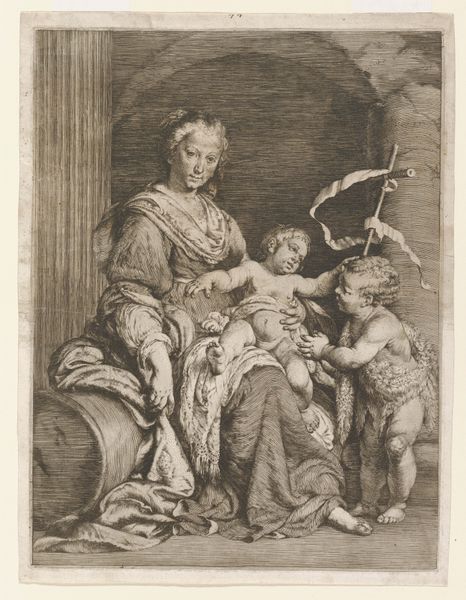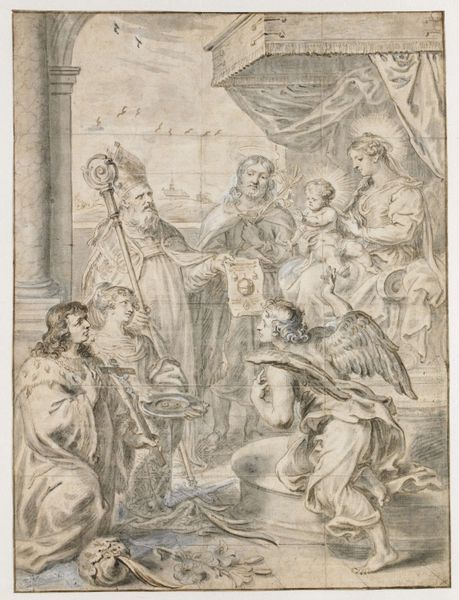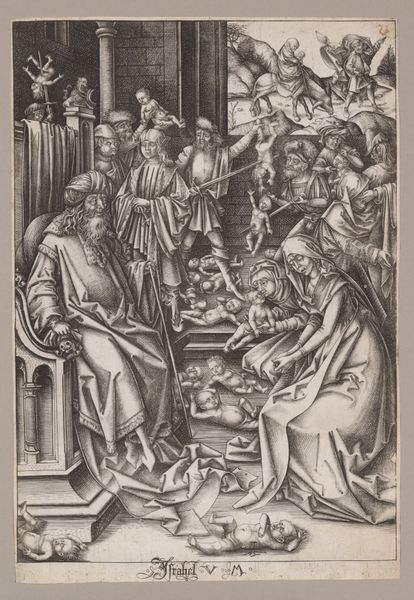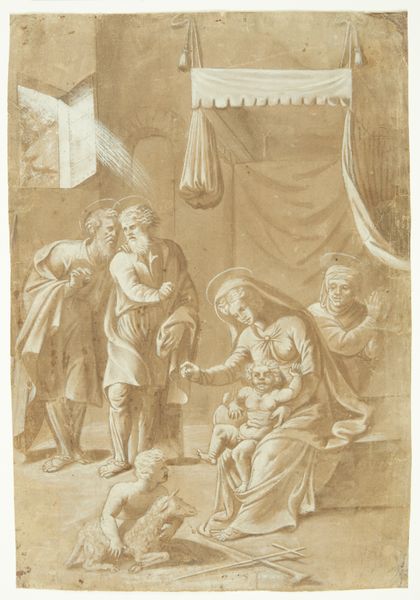
painting, oil-paint
#
narrative-art
#
baroque
#
painting
#
oil-paint
#
figuration
#
chiaroscuro
#
history-painting
Dimensions: 101 x 141 cm
Copyright: Public domain
Curator: Giulio Cesare Procaccini's oil painting, "The Beheading of Saint John the Baptist", is certainly a work of considerable drama. Editor: The shadows alone are almost theatrical, and the way that single light source illuminates the central figures—it practically forces your gaze upon the horror of the scene. There is something intensely physical about it. Curator: Absolutely. Procaccini employs chiaroscuro to great effect, drawing influence from artists like Caravaggio and his impact on depictions of martyrdom throughout the period. This piece engages directly with religious iconography, specifically looking at the social expectations surrounding saintly virtue versus the real violence enacted by authority figures. Editor: I'm struck by the figure of Salome. Here we have this figure that is an object of desire whose power resides in her beauty; it almost forces one to examine female representation within such religious narratives and within political history more broadly. One sees reflected both power and disempowerment at once. Curator: Yes, let’s not forget this took place during a specific period when both aristocratic patronage and ecclesiastical demand dictated how stories, even gruesome ones, were visualized. This work needs to be seen in relation to the evolving tastes within Counter-Reformation art where we observe ever greater emotional intensity. Editor: The positioning of John the Baptist's severed head on the platter is interesting. We also have the almost angelic figures overlooking the crime scene itself, which are, of course, designed to provoke some kind of emotion. I am seeing commentary on issues of social hierarchies and of innocence defiled in very direct visual terms. Curator: And isn't it fascinating that the banquet scene transforms into something akin to an execution chamber, where a spectacle of violence unfolds. Understanding art like this involves recognizing how its historical context shapes its narrative. Editor: Indeed, and exploring art history through painting reveals many cultural dynamics at work concerning gender, power and class issues that impact even today. Curator: Seeing it all unfold now gives it an unexpected sense of historical continuity. Editor: The ability to connect those narratives creates art, but even beyond art the ability to generate conversations to contextualize experiences of spectators remains vital.
Comments
No comments
Be the first to comment and join the conversation on the ultimate creative platform.
